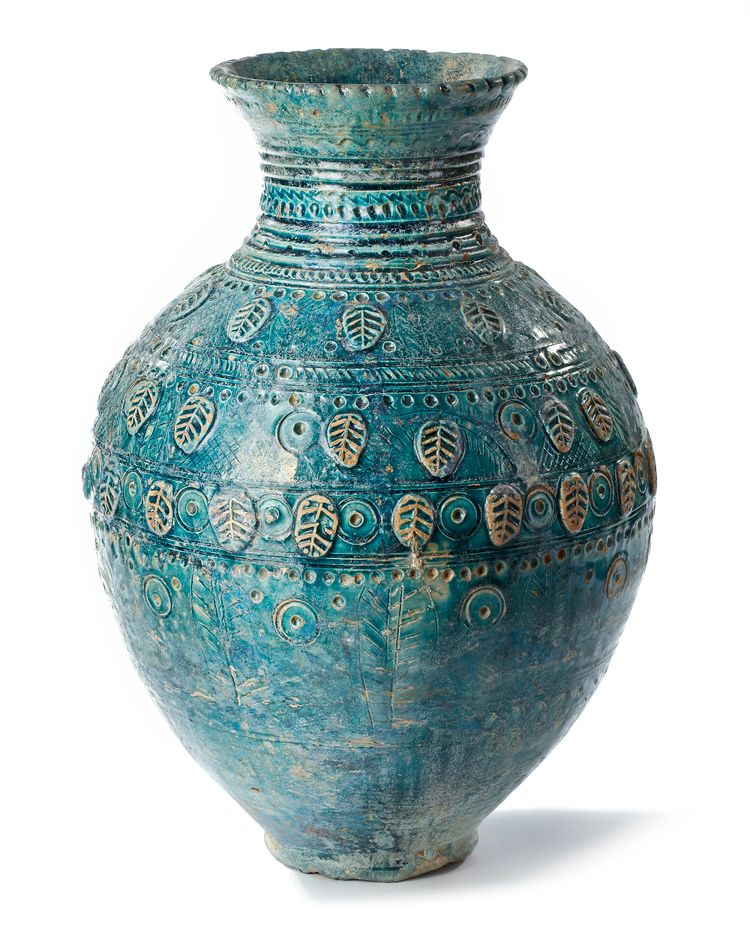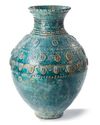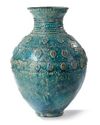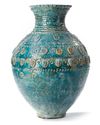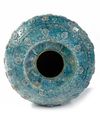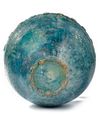A POST SASSANIAN TURQUOISE GLAZED POTTERY STORAGE JAR, PERSIA, 7TH-8TH CENTURY
The egg-shaped jar, is covered entirely with a blue-greenglaze, which is common in Sassanid ceramic production. The decoration moulded, applied and stamped with incised detailing, the body with a band of alternating panels containing crosses and cable design with applied and stamped floral motifs, above and below a band of applied bosses in the form of flower heads, the shoulder with a band of foliate motifs arranged in a zig-zag pattern on a ground of incised dots, the neck with a frieze of moulded palmette motifs.
The shape, decoration and technique used in the piece are evidence of the stylistic continuity between the late Sassanid and the early Islamic periods. The jar was probably intended to store foodstuffs.
The shape and decoration of the jar, the technique used and the dark green glaze are all typical of Sassanid ceramics.
Height: 50 cm.
PROVENANCE
Private collection, Germany
CATALOGUE NOTE
This type of alkaline-glazed pottery, intended for storage of food stuffs or drinking water, had been produced in kilns along the Upper Euphrates since at least the Parthian period continuing through the Umayyad and early Abbasid periods, with subtle changes in shape and design. The distinctive silvery iridescence offset by the turquoise glaze only adds to their decorative appeal. Their story is also fascinating, for examples have been found as far afield as Fujian province in China. A tomb at Lotus Peak on the outskirts of Fuzhou, dedicated to one Liu Hua, who died in 930 AD, wife of King Wang Yangjun of the Min Kingdom (909-945 AD), yielded three similar turquoise-glazed jars, testament to the trading activities of Persian and Arab merchants along the southern coast of China at this time.
